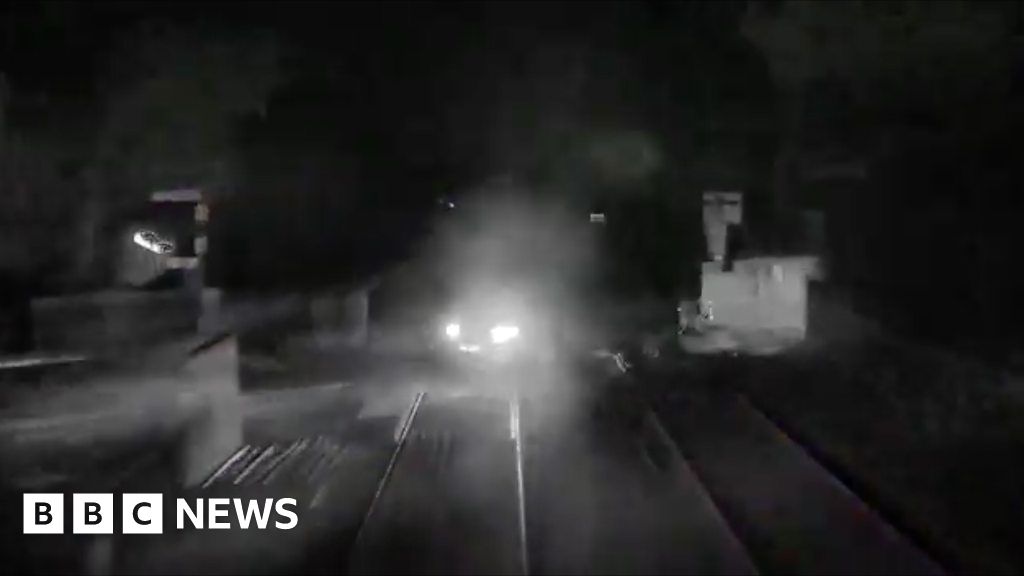If there was a an anomaly with the lights sequence it would explain why there were issues with drivers at that point but it DOES NOT make the actions to drive across acceptable.
It would not be an anomaly if the 1st train had passed the strike-out point shortly before the second train passed the strike-in point. Depending on the exact setup, it may be possible that the Signaller does not initiate the sequence themselves. Somebody with better local knowledge may be able to confirm exactly what happens here. I know there are locations where the sequence starts on it's own and gives an audible warning to the signaller to monitor the crossing and declare it clear (or not, as the case may be).
From the video only, one has to conclude that the time between the orange lights illuminating and the barriers starting to close is the same time as it takes a large vehicle to cross the entire crossing, at speed. And that isn't enough.
From the video it looks like the crossing has just opened after a train, hence the stationary HGV and heavy acceleration/braking of the Van. The timings do not seem to be particularly tight, given that normally vehicles would have a longer line of sight to the crossing up the ramp, and the Van did manage to stop.
This road has a 60mph limit, junctions in close proximity at either end limiting approach speed and a straight line of sight from those junctions to the signals, how long do you think is needed to react and bring yourself to a safe stop?
A vehicle already at a stand when the orange light comes back on should not need as much warning as a vehicle approaching at 60mph.
In a select number of posts there seems to be a suggestion that the railway is going out of it's way to somehow 'dress up' this incident, and that the lorry driver was not unreasonable in his/her actions. I find this odd because 1. this is a forum of people interested in rail and 2. Running the lights at a level crossing is quite possibly the most selfish action you can take behind the wheel of a car, in the same bracket as driving drunk. You are deliberately putting potentially hundreds of lives at risk, and risk ruining the journeys of thousands more and costing NR (and by extension the taxpayer/farepayer) 6 or 7 figures. All for the sake of an extra 2-3 minutes, which will usually be spent waiting at the next junction down the road for a net zero gain in journey time.
NR has neither interest in making nor need to make incidents more severe than they are - they have to deal with the tragic consequences at level crossings far too often. Had there been a fault with the crossing, the RAIB would have said so - as they did for an AHB crossing about a year ago where the barriers raised immediately PRIOR to a train crossing over, and a fatal collision was avoided by 0.25 seconds.



